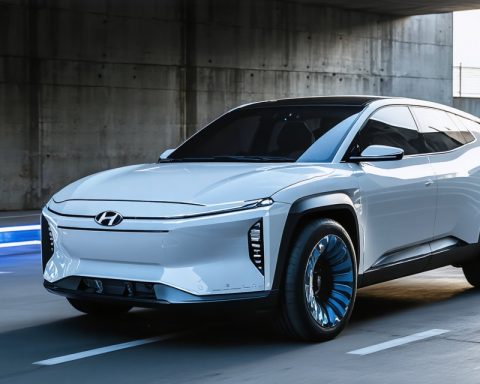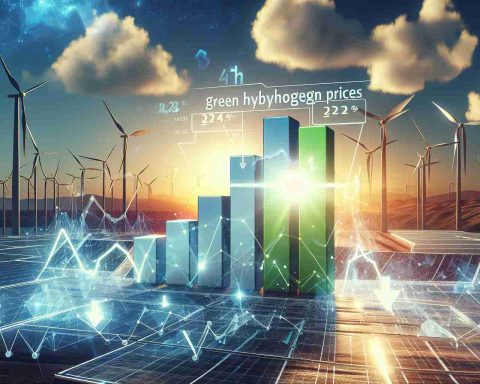- Clean hydrogen is being hailed as a transformative energy source that could significantly reduce pollution and promote sustainable energy.
- While projects and initiatives are advancing globally, understanding and addressing the complexities and limitations of hydrogen are essential.
- Challenges such as cost efficiency, infrastructure development, and technological maturity must be addressed to realize hydrogen’s full potential.
- Industry leaders and business executives need a clear understanding and strategic approach to capitalize on hydrogen advancements effectively.
- The path to a hydrogen-powered future requires balancing innovation with realistic assessments of current capabilities and limitations.
- An informed perspective on clean hydrogen will help shape long-term strategies that align with environmental and economic objectives.
In the world of energy, a silent revolution brews, driven by a colorless, odorless gas promising to transform how we power our lives: clean hydrogen. As leaders across industries ponder this potential shift, clarity remains crucial.
Touted as the fuel of the future, clean hydrogen inspires visions of a world where pollution dwindles and sustainable energy flourishes. Yet, beneath the surface lies a complex landscape that demands deeper scrutiny. To navigate these waters requires cutting through the exuberant proclamations and unveiling the truth behind the hydrogen hype.
Bold initiatives are set in motion, aiming to harness hydrogen’s virtues while mitigating its challenges. Industry experts focus on dispelling myths and highlighting hard facts, mapping out a realistic path for hydrogen to become a cornerstone of global energy sources. It’s a balancing act—embracing innovation while acknowledging practical limitations.
Hydrogen projects worldwide are gaining momentum. From trailblazing research facilities to cutting-edge pilot plants, each step taken brings us closer to a more sustainable tomorrow. However, the road ahead is not without obstacles. Cost efficiency, infrastructure development, and technological maturity are critical hurdles that must be overcome to unlock hydrogen’s true potential.
Business executives and industry leaders must make informed choices, navigating this dynamic field with a blend of optimism and caution. Insightful analysis equips them with the knowledge necessary for crafting long-term strategies that align with economic and environmental goals.
As the world looks toward a cleaner future, those who dare to question and seek clarity will find themselves at the forefront of the hydrogen era. The journey involves more than just understanding technology—it’s about grasping the bigger picture and making decisions that will shape the future of energy.
The Hidden Factors Fueling The Hydrogen Revolution: What You Need To Know
Understanding Hydrogen’s Potential and Challenges
How-To Steps & Life Hacks: Navigating the Hydrogen Economy
1. Start Small with Pilot Projects: Launch small-scale hydrogen projects in collaboration with local universities and research institutions to test feasibility and gather data.
2. Invest in Infrastructure: Developing robust infrastructure, such as pipelines and fueling stations, is critical. Collaborating with governments can support widespread adoption.
3. Optimize Production: Focus on producing “green hydrogen” via electrolysis using renewable energy sources. This ensures a zero-carbon footprint, unlike “grey hydrogen” derived from fossil fuels.
4. Secure Government Incentives: Leverage subsidies and tax incentives available from governmental bodies to offset initial costs.
5. Prioritize Education and Training: Equip your workforce with expertise in hydrogen technology through targeted education programs.
Real-World Use Cases: Hydrogen’s Practical Applications
– Transportation: Fuel cell vehicles are gaining traction, offering an alternative to electric batteries for long-range and heavy transportation sectors.
– Industrial Energy: Industries like steel and cement are exploring hydrogen as a cleaner, high-temperature process energy.
– Grid Stability: Hydrogen can store excess renewable energy, providing a buffer to stabilize power grids reliant on intermittent sources like solar or wind.
Market Forecasts & Industry Trends
The hydrogen market is expected to grow significantly, with projections estimating a value of over $300 billion by 2050. Industry trends point towards integration with renewable energy sources, driving research and development in electrolysis and production technology.
Reviews & Comparisons
– Hydrogen vs. Electric Batteries: While both aim to reduce carbon emissions, hydrogen fuel cells offer faster refueling and longer ranges for heavy-duty vehicles, whereas batteries are more efficient for passenger vehicles.
– Green vs. Grey Hydrogen: Green hydrogen, though more expensive currently, presents a sustainable future compared to grey hydrogen which is cheaper but reliant on natural gas.
Controversies & Limitations
– Critics argue hydrogen is inefficient compared to direct electrification due to energy losses in conversion and transport.
– Concerns about the environmental impact of “blue hydrogen,” which relies on carbon capture, remain a topic of debate.
Features, Specs & Pricing
– Hydrogen Fuel Cells: Typically operate at 40-60% efficiency for converting hydrogen to electricity.
– Cost: Green hydrogen production costs range from $1.50 to $5 per kg, with ongoing research aimed at reducing this.
Security & Sustainability
Hydrogen as an energy vector is low-risk in terms of pollution and sustainable when sourced from renewables. However, safety protocols must be stringent due to its flammability.
Insights & Predictions
Advancements in electrolysis efficiency and scaling infrastructure development can bring down costs and enhance adoption. Government policies focusing on climate goals will further accelerate market growth.
Tutorials & Compatibility
Compatibility with existing energy systems is underway, with retrofitting gas turbines to run on hydrogen being explored. Tutorials for industry professionals are increasingly common to facilitate understanding and implementation.
Pros & Cons Overview
– Pros: Zero emissions (green hydrogen), scalable storage, high energy density.
– Cons: High initial cost, complex infrastructure needs, current inefficiencies in production.
Conclusion: Actionable Recommendations
Business leaders should:
– Conduct feasibility studies to determine strategic entry points in the hydrogen economy.
– Advocate for policy frameworks that support hydrogen infrastructure.
– Collaborate with industry players to share technology and drive innovation.
For further exploration in the hydrogen industry, visit Department of Energy – Hydrogen and Fuel Cells.
Implement these strategies to position your business at the forefront of the hydrogen revolution, balancing innovation with practical execution for a sustainable future.














